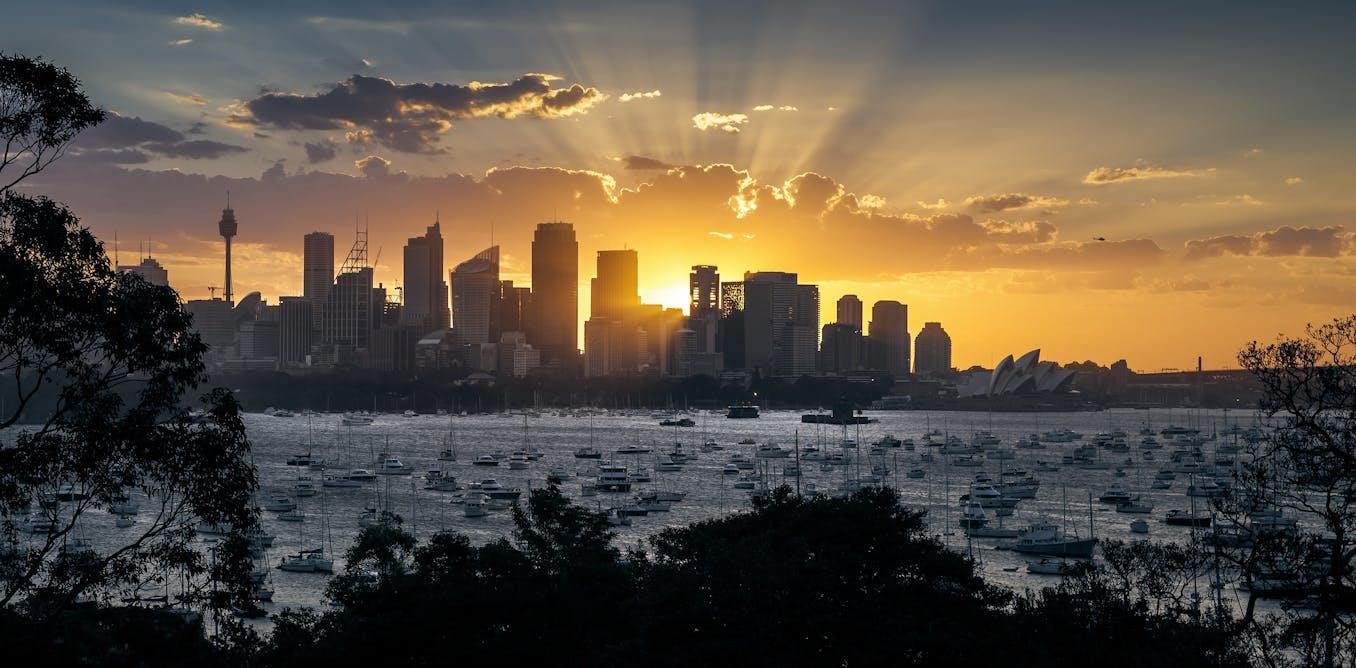
The Good News Is The Australian Economy Is About To Turn Up. Here's Why
Tuesday's Westpac Melbourne Institute survey shows three times as many Australians say their finances have worsened than say they've got better, and twice as many think the economy is getting worse as think it is getting better.
The national accounts show real income per Australian (adjusted for inflation) has been sliding for a year .
We are buying less per person online and in shops than at any time in the past two and a half years .
And Commonwealth Bank transaction data shows even our spending on essentials is failing to keep pace, except for older (mostly unmortgaged) Australians who are actually spending more on essentials than they were, as well as more on luxuries.
But – and I am sure you'll find this hard to believe – things are nowhere near as bad right now, in the middle of 2024, as they were expected to be.
Nowhere near as bad as predictedA year ago, at the start of the financial year that's about to end, the panel of expert forecasters assembled by The Conversation expected inflation and interest rates to be much higher than they are today.
Inflation was going to be 3.9% , not the present 3.6% and headed down, and the Reserve Bank's cash rate was going to climb two times in the second half of 2023 from 4.1% to 4.5%. Instead it climbed once, to 4.35%, and hasn't climbed since.
That's something worth remembering when people tell you inflation is stubbornly high . It isn't as stubbornly high as it was expected to be.
Economists pencilled in a 42% chance of recession. MikeShots/Shutterstock
And a recession looks much less likely.
Back in mid-2023, when asked about the probability of a recession in the next two years, the expert panel's average answer was 42% .
Asked when that recession was most likely to start, the panel's average answer was December 2023.
So worried was the government over Christmas that it asked the treasury to come up with extra cost of living relief. What the treasury produced was a reworking of the Stage 3 cuts due to start in July.
The rejig doubled the tax cut set to go to Australians on average earnings and halved the tax cut set to go to Australians on more than A$200,000.
By the time The Conversation's panel next assembled to examine the probability of a recession, in February, it had cut the likelihood to 20% , which is about the lowest average probability a recession ever gets in these sorts of surveys.
What's gone rightWhat's gone right is that inflation has proved easier to subdue than expected, and not only inflation in the price of goods, many of which are made overseas. Inflation in the price of services has been falling the entire financial year .
That good news has allowed the Reserve Bank to hold off on increasing interest rates all year. And it's partly because of us.
Businesses attending the bank's liaison meetings have told it they are“intensifying their focus on containing costs as they find it harder to increase prices”.
That's because we are less likely to put up with higher prices. We have become“budget conscious” making it more difficult for firms to pass on cost increases.
So instead, firms are cutting costs. Examples include
And they are becoming less likely to offer pay rises, planning for slower wage growth in the year ahead.
All of this is bearing down on inflation.
Australia's relatively-new monthly consumer price index is likely to show an increase when it is released on Wednesday. The annual rate of inflation might climb from 3.6% in April to 3.8% or even 4% in May.
Those are the headline AMP and Westpac forecasts. But they hide what the AMP and Westpac expect to happen beneath the surface.
The AMP expects prices to fall in the month of May, by 0.2%. Westpac expects no change, meaning a monthly inflation rate of zero.
The annual inflation rate is expected to climb because prices fell a year earlier in May 2023, not because they climbed in May 2024.
Lower inflation, and a tax cutIf the inflation rate does keep sinking when the official quarterly figures are released next month, it'll be doubly good news for stretched households. It'll mean slower price rises, and probably an end to talk of further interest rate rises.
Along with the Stage 3 tax cuts legislated by then treasurer Scott Morrison way back in 2018 and due to hit pay packets in an amended form next week, they are set to make us feel better about the future; perhaps better than we've felt in years.
The long-delayed tax cuts, which turn out to be timely in a way Morrison couldn't have antipated, are worth about $2,200 per year for the average household according to calculations being circulated by Treasurer Jim Chalmers.
That's $84 per fortnight, after tax. For a couple with two children, it's almost $4,000, which is $150 per fortnight.
As bleak as it was, this month's consumer survey recorded a slight uptick in confidence, of 1.7% .
On Monday The Conversation will publish the experts' forecasts for the financial year that's about to begin. It's a fair bet they'll be brighter than those for the financial year about to end.

Legal Disclaimer:
MENAFN provides the
information “as is” without warranty of any kind. We do not accept
any responsibility or liability for the accuracy, content, images,
videos, licenses, completeness, legality, or reliability of the information
contained in this article. If you have any complaints or copyright
issues related to this article, kindly contact the provider above.


















Comments
No comment